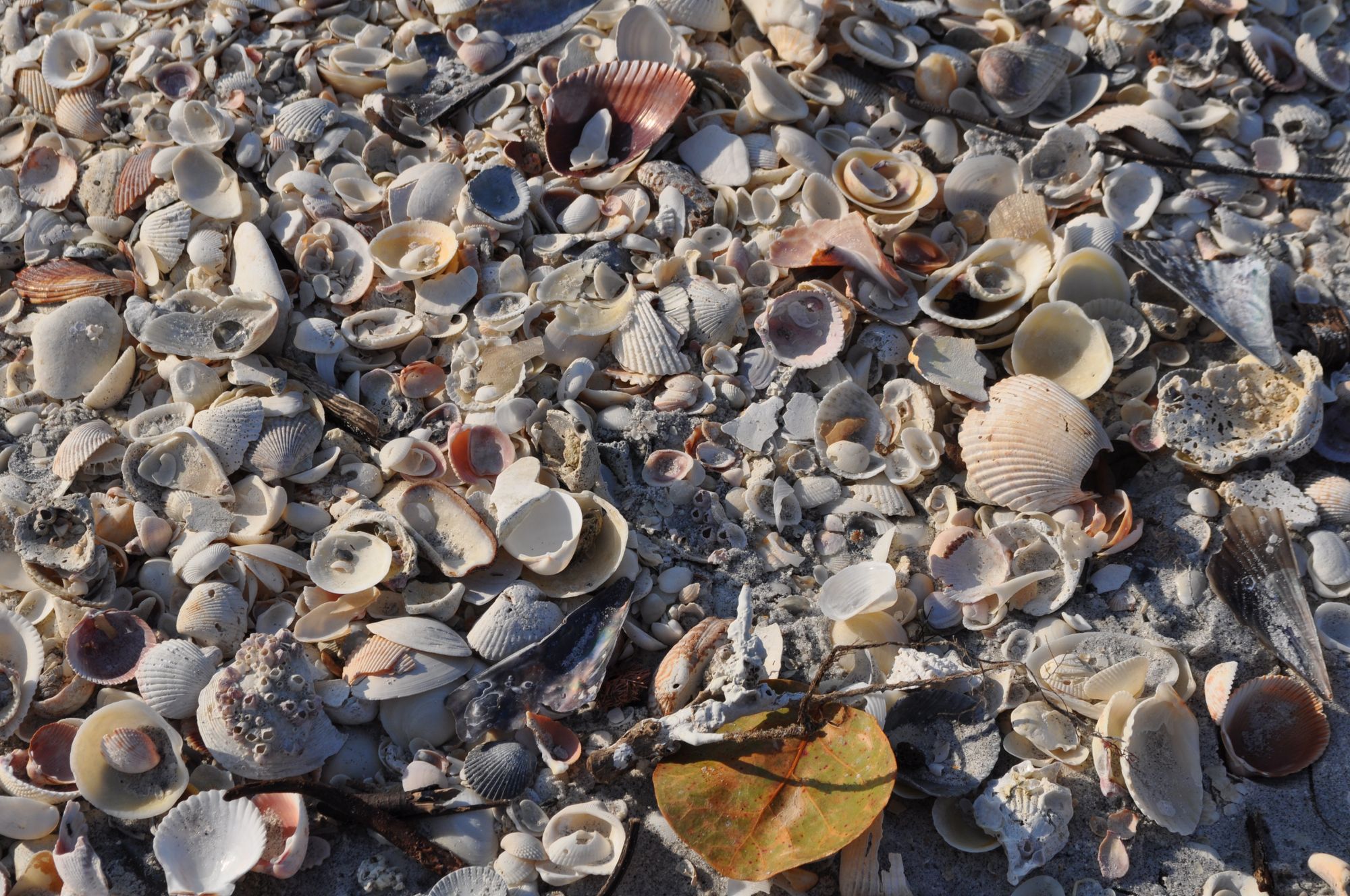
Take a Trip to the Florida Seaside
There is nothing quite as iconic to Florida as a trip to the beach. The ocean is rarely more than 60 miles away, at least as the crow flies, from anywhere in the state. On the east coast, we have the Atlantic Ocean and on the west coast the Gulf of Mexico. There are a number of reasons people go to the beach, but Florida offers an extraordinary opportunity for those who like to collect shells.
This is especially true for Gulf beaches. While the continental shelf is relatively narrow on the Atlantic side, it extends quite far into the Gulf, as you can see on the bathymetric map below. This allows for ample habitat for the species that provide beach shell combers their finds. Keep in mind that all of those shells were created by living organisms out of calcium carbonate. If you remember our story about sand and minerals in Florida, you know that those same shell ‘skeletons’ make up much of the structure that the state sits on top of.
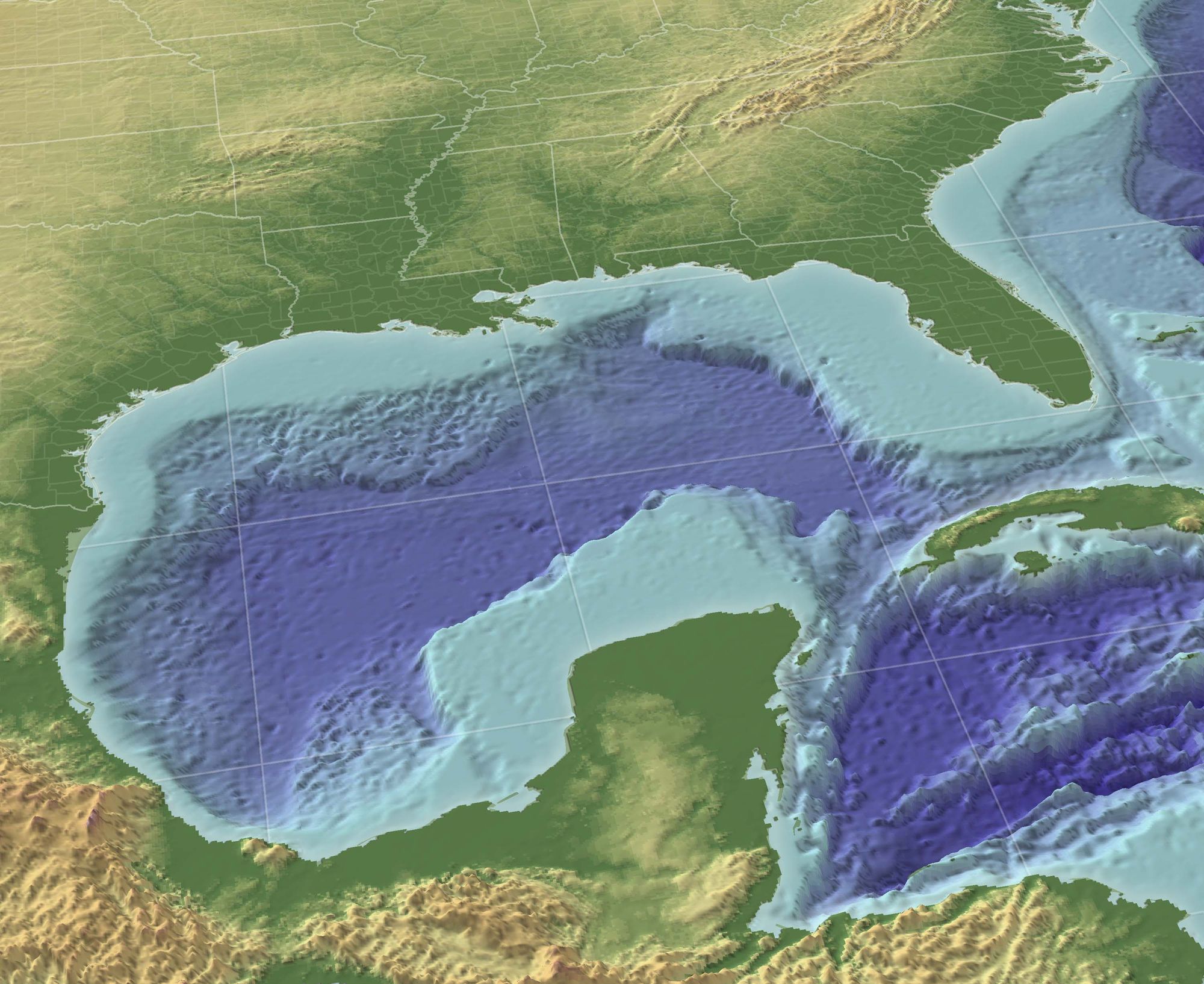
Florida also has a wide variety of large, colorful, or just plain interesting shells that appear here. This is especially true of the gastropod, or snail, shells. Collecting these individuals adds the potential twist that the organism may still be alive. If that is the case, taking the shell is not just illegal, but also a good way to stink up your entire house as it decomposes.
One of the most quintessential snail shells here is the Florida fighting conch, Strombus alatus, though despite the name it can be found as far north as North Carolina and throughout much of the Gulf. It derives its name from the distinctive form of movement it displays, advancing in large singular bursts instead of a steady progression.
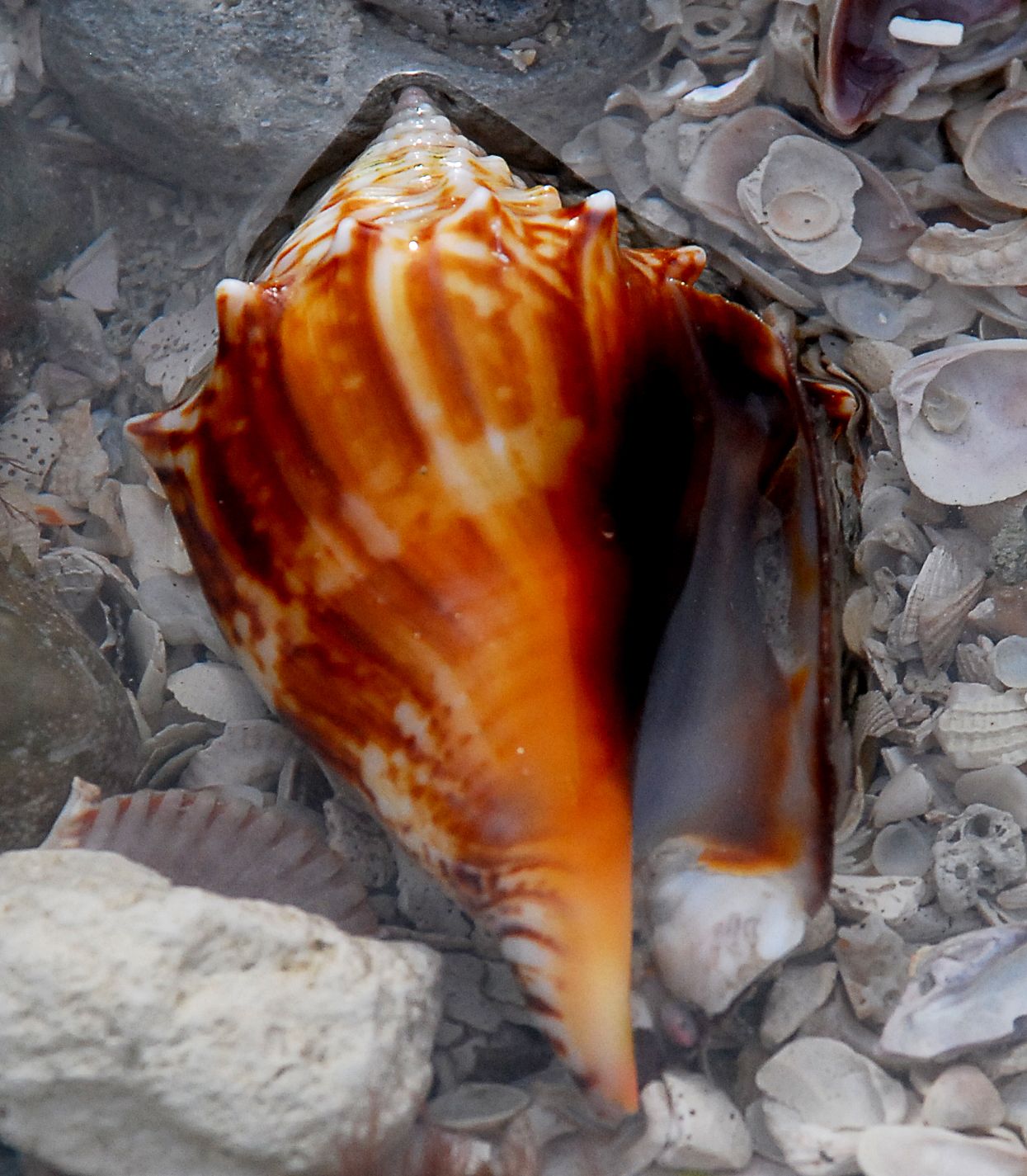
The fighting conch is an herbivore, but the next individual, which is also the state shell of Florida, is carnivorous, primarily feeding on other snails. It is the largest gastropod found in American waters, Triplofusus papillosus. It is commonly known as the ‘horse conch’, although it is not actually a true conch at all. It is absolutely voracious and will even go after smaller individuals of its own species. It will also dine on tulip snails, Fasciolaria tulipa, and lightning whelks, Sinistrofulgur perversum, which are common sights on Florida beaches as well. Sometimes you will even spot the spiral-shaped lightning whelk egg casings that have washed up.
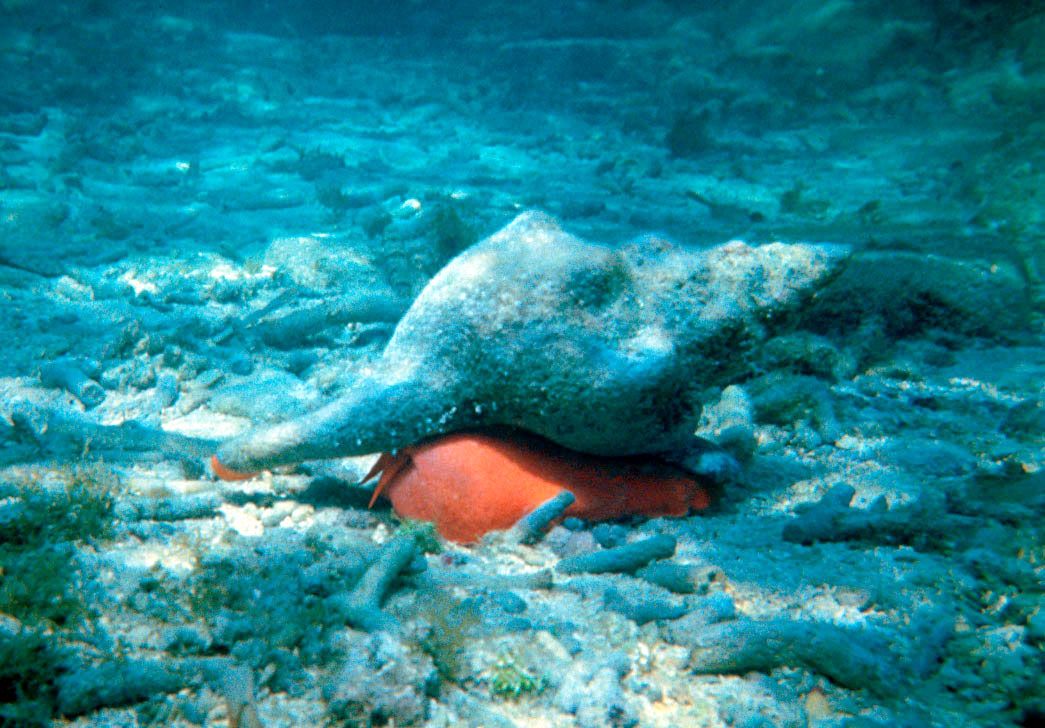
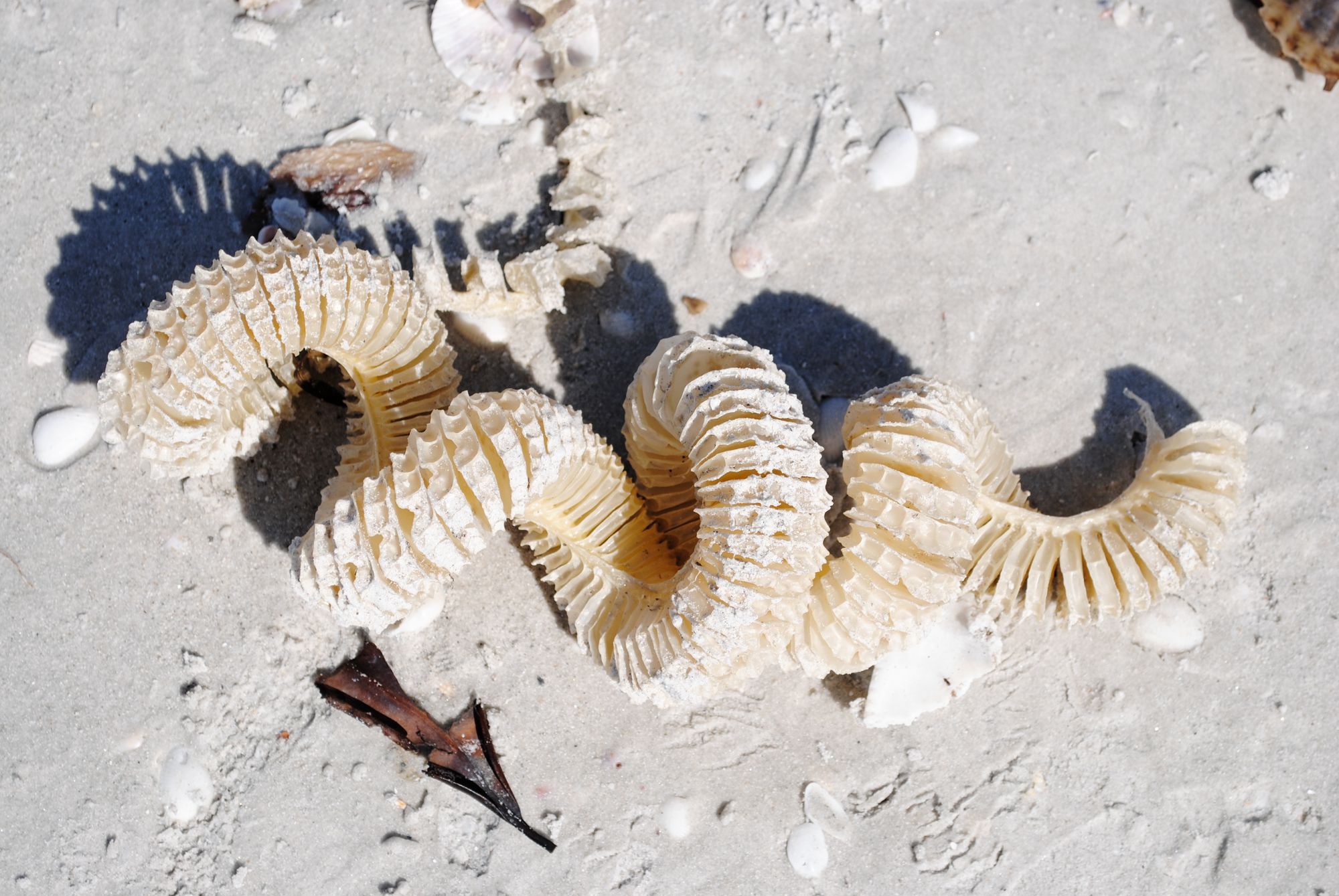
However, snails are not the only spectacular shells to be found. We also have a number of bivalve species. These include Arca zebra, often called the ‘turkey wing’ because its shape and coloration resemble a bird’s wings, particularly that of the wild turkey. There are also the small, delicate, and often colorful coquinas, Donax variabilis. The name comes from the Spanish word for ‘cockle’ and they can frequently be found with the hinge still intact, allowing a collector to retain both halves of the shell.

Of course, this is only a small sampling of the things one can find on the beach here in Florida. Each shell, each bit of beach debris, has a story to tell if we care to listen. Think about those stories the next time you’re on the beach. ‘How did this particular thing come to be here in this moment?’ ‘What has it gone through before coming here and what does the future hold for it?’ You don’t need to know the answers, but always think about the questions.
With only twelve stories, we’ve only really been able to scratch the surface of all the wonders that there are to see in the Florida Backyard. But, I hope this has inspired you to walk out your door when you have a chance and explore the natural settings that you take for granted. I guarantee that wherever you are there are opportunities to observe nature in your metaphorical backyard.